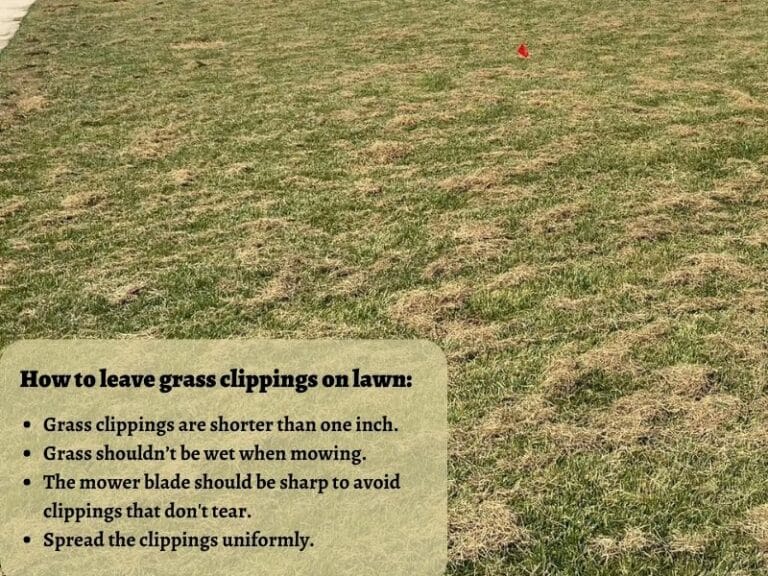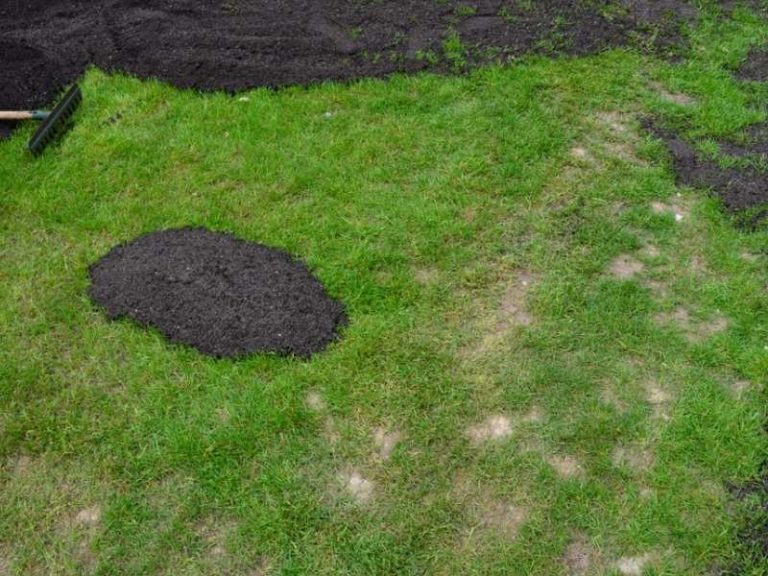When to Mow After Overseeding: How Long Should You Wait?
New grass seedlings usually have fragile roots and need proper care in terms of watering, fertilizing, and mowing to ensure healthy, fast growth. That’s why you should properly time the first mowing after overseeding your lawn. But when should you mow after overseeding your lawn?
Wait for at least 3 weeks after overseeding to start mowing your lawn. This allows the new grass to establish its roots firmly into the ground. The rule of thumb is to start mowing when the new grass grows to 3.5 inches tall so that you can cut off ⅓ of the leaf blades without damaging the turf.
Keep in mind that best time to mow new grass after overseeding depends on the type of turf, but should be no sooner than two weeks after planting.
Can I mow after overseeding my lawn?
It’s important to mow your lawn after overseeding but only after the new grass seed has grown to about 3.5 inches tall. Avoid mowing the turf immediately after overseeding, as this will stress out the new grass and affect its growth.
New grass needs time for proper root development before it can be mowed. It’s only once the roots are properly anchored in the soil that the turf can withstand the pressure from mowing.
How long after overseeding can you mow?
The best time to mow your lawn is at least 4 weeks after overseeding. Waiting this long allows enough time for proper root development and for the grass to grow to an appropriate height that can withstand the cutting off of some leaf blades.
However, the time it takes for grass seedlings to reach a mowable height after seeding depends on the grass species.
Cool-season grasses like fescues and Kentucky bluegrass are usually planted in the spring and fall and will have grown to about 2.5 to 4 inches tall after 4 weeks. If you overseeded them with a warm-season turfgrass like Bermuda grass or Bahia grass just before summer, the grass will be about 2-3 inches three weeks after planting. At these heights, you can mow the lawn without removing too much of the grass blades.
Tips for Cutting Grass after Overseeding
It’s important to stick to the correct mowing techniques to avoid stressing your young grass seedlings. Some of the things you should consider when mowing after overseeding your lawn include the mowing height, mower blade sharpness, and lawn wetness/dryness.
Set the right mowing height
The recommended mowing height for new growth after overseeding is 3 inches. Mowing at a height that’s too short hinders the grass blades from gathering adequate moisture due to reduced shade. In addition, mowing at 3 inches allows you to cut just enough grass without hampering root formation.
If you’re unsure how high you should mow your grass after overseeding, simply set the lawnmower blade to the highest possible height. Alternatively, you can check the turf height and then ensure that you’re cutting no more than 1/3 of the total length of the grass.
Ensure the turf is dry
Avoid mowing wet grass or immediately after rain or watering. Wet grass is more vulnerable to damage from mower blades. What’s more, it’s more prone to compaction and can easily be uprooted by the mower blades. Wait until your newly overseeded turf is fully dry before mowing it.
Newly seeded grass is also vulnerable to lawn fungal diseases as it hasn’t had enough time to develop resistance. Since fungi thrive best in wet conditions, you’re highly likely to spread the fungal infections onto the newly overseeded areas if you mow the grass when wet.
Sharpen your mower blades
Blunt lawnmower blades result in an uneven cut, which results in greater turf injury and lower chances of recovery. As such, you should always ensure your mower blades are sharp. Always take your mower blades to your area hardware store for sharpening after every 20 hours of use.
Depending on the lawn size, you also want to make sure you use the right lawn mower on your new grass to achieve clean cuts. Not all lawn mowers produce a high-quality cut on the grass. Most self-propelled rotary mowers hack grass blades, leaving them exposed to disease attacks.
If your lawn is newly overseeded, I recommend that you use a reel lawn mower that produces a clean cut such as the Fiskars StaySharp Max Reel Mower.
Use grass clippings as mulch
After mowing your lawn, you should leave the cut grass clippings on the newly overseeded turf as mulch. The mulch will provide the growing grass with essential nutrients, further boosting turf growth and development.
However, I wouldn’t recommend mulching in some circumstances especially when the lawn is under a disease attack or when there are weeds with seedheads. In this case, you want to bag grass clippings to prevent spreading weeds and the disease.
Keep in mind that it is not a good idea to overseed a weedy lawn in the first place as this puts the newly planted grass under the stress of competing with weeds for nutrients, sunlight, and space. You always want to kill weeds first before overseeding the lawn.
Adopt the proper mowing frequency
After the first mowing post-overseeding, subsequent mowings will depend on the rate of regrowth. Some turf varieties grow faster than others. You don’t want to mow too frequently, as this will negatively affect turf growth and health.
References
- University of Illinois Extension, Lawn Talk: Guidelines for Mowing Lawns Properly
- David Minner, Iowa State University Extension turfgrass specialist: Mowing Your Lawn



